Adopt a Species
You can support our research and conservation projects by adopting one of the Galapagos species.

Discover our work conserving key marine species in Galapagos and the Eastern Tropical Pacific.
View our Ocean Programs Deep-ocean exploration & conservation Mangrove Ecology and Climate Change Marine biodiversity research Marine bird conservation Ocean governance Sea turtle conservation Shark ecology and conservationExplore our efforts to safeguard and restore the Galapagos Islands' iconic land-based fauna and flora.
View our Land Programs Conservation of threatened plant species Control of the avian vampire fly Floreana Ecological Restoration Project Giant tortoise conservation Landbird conservation Restoration of Arid Zones Scalesia forest restorationUnderstand how our work is grounded in the benefits nature provides to the people of Galapagos.
View our people programs Education and Community Outreach Sustainable fisheries Sustainability for Conservation Urban and rural restoration
Make a lasting impact in Galapagos. Donate to support our mission and our work.
Donate Give monthly Adopt a speciesThere are a number of other ways you or your organization can contribute to our work.
Leave a legacy gift Become a corporate donor Fundraise for GalapagosThe impact you make in Galapagos is part of a larger footprint. Get involved today.
Meet our donors Become a CDF Ambassador Become a volunteer Send a free e-card! Sign up to our newsletter
Discover how our science and conservation programs are making a difference for the future of Galapagos.
View moreThe latest news releases from the Charles Darwin Foundation and its Research Station.
View moreExplore firsthand accounts from our researchers, staff, and collaborators in Galapagos.
View more
When you travel to Galapagos, you become part of a global effort to protect these iconic islands.
About Galapagos Travel tips How to pack for Galapagos Frequently Asked Questions Galapagos National Park Rules

Discover our work conserving key marine species in Galapagos and the Eastern Tropical Pacific.
View our Ocean Programs Deep-ocean exploration & conservation Mangrove Ecology and Climate Change Marine biodiversity research Marine bird conservation Ocean governance Sea turtle conservation Shark ecology and conservationExplore our efforts to safeguard and restore the Galapagos Islands' iconic land-based fauna and flora.
View our Land Programs Conservation of threatened plant species Control of the avian vampire fly Floreana Ecological Restoration Project Giant tortoise conservation Landbird conservation Restoration of Arid Zones Scalesia forest restorationUnderstand how our work is grounded in the benefits nature provides to the people of Galapagos.
View our people programs Education and Community Outreach Sustainable fisheries Sustainability for Conservation Urban and rural restoration
Make a lasting impact in Galapagos. Donate to support our mission and our work.
Donate Give monthly Adopt a speciesThere are a number of other ways you or your organization can contribute to our work.
Leave a legacy gift Become a corporate donor Fundraise for GalapagosThe impact you make in Galapagos is part of a larger footprint. Get involved today.
Meet our donors Become a CDF Ambassador Become a volunteer Send a free e-card! Sign up to our newsletter
Discover how our science and conservation programs are making a difference for the future of Galapagos.
View moreThe latest news releases from the Charles Darwin Foundation and its Research Station.
View moreExplore firsthand accounts from our researchers, staff, and collaborators in Galapagos.
View more
When you travel to Galapagos, you become part of a global effort to protect these iconic islands.
About Galapagos Travel tips How to pack for Galapagos Frequently Asked Questions Galapagos National Park Rules

Discover our work conserving key marine species in Galapagos and the Eastern Tropical Pacific.
View our Ocean Programs Deep-ocean exploration & conservation Mangrove Ecology and Climate Change Marine biodiversity research Marine bird conservation Ocean governance Sea turtle conservation Shark ecology and conservationExplore our efforts to safeguard and restore the Galapagos Islands' iconic land-based fauna and flora.
View our Land Programs Conservation of threatened plant species Control of the avian vampire fly Floreana Ecological Restoration Project Giant tortoise conservation Landbird conservation Restoration of Arid Zones Scalesia forest restorationUnderstand how our work is grounded in the benefits nature provides to the people of Galapagos.
View our people programs Education and Community Outreach Sustainable fisheries Sustainability for Conservation Urban and rural restoration
Make a lasting impact in Galapagos. Donate to support our mission and our work.
Donate Give monthly Adopt a speciesThere are a number of other ways you or your organization can contribute to our work.
Leave a legacy gift Become a corporate donor Fundraise for GalapagosThe impact you make in Galapagos is part of a larger footprint. Get involved today.
Meet our donors Become a CDF Ambassador Become a volunteer Send a free e-card! Sign up to our newsletter
Discover how our science and conservation programs are making a difference for the future of Galapagos.
View moreThe latest news releases from the Charles Darwin Foundation and its Research Station.
View moreExplore firsthand accounts from our researchers, staff, and collaborators in Galapagos.
View more
When you travel to Galapagos, you become part of a global effort to protect these iconic islands.
About Galapagos Travel tips How to pack for Galapagos Frequently Asked Questions Galapagos National Park Rules
You can support our research and conservation projects by adopting one of the Galapagos species.
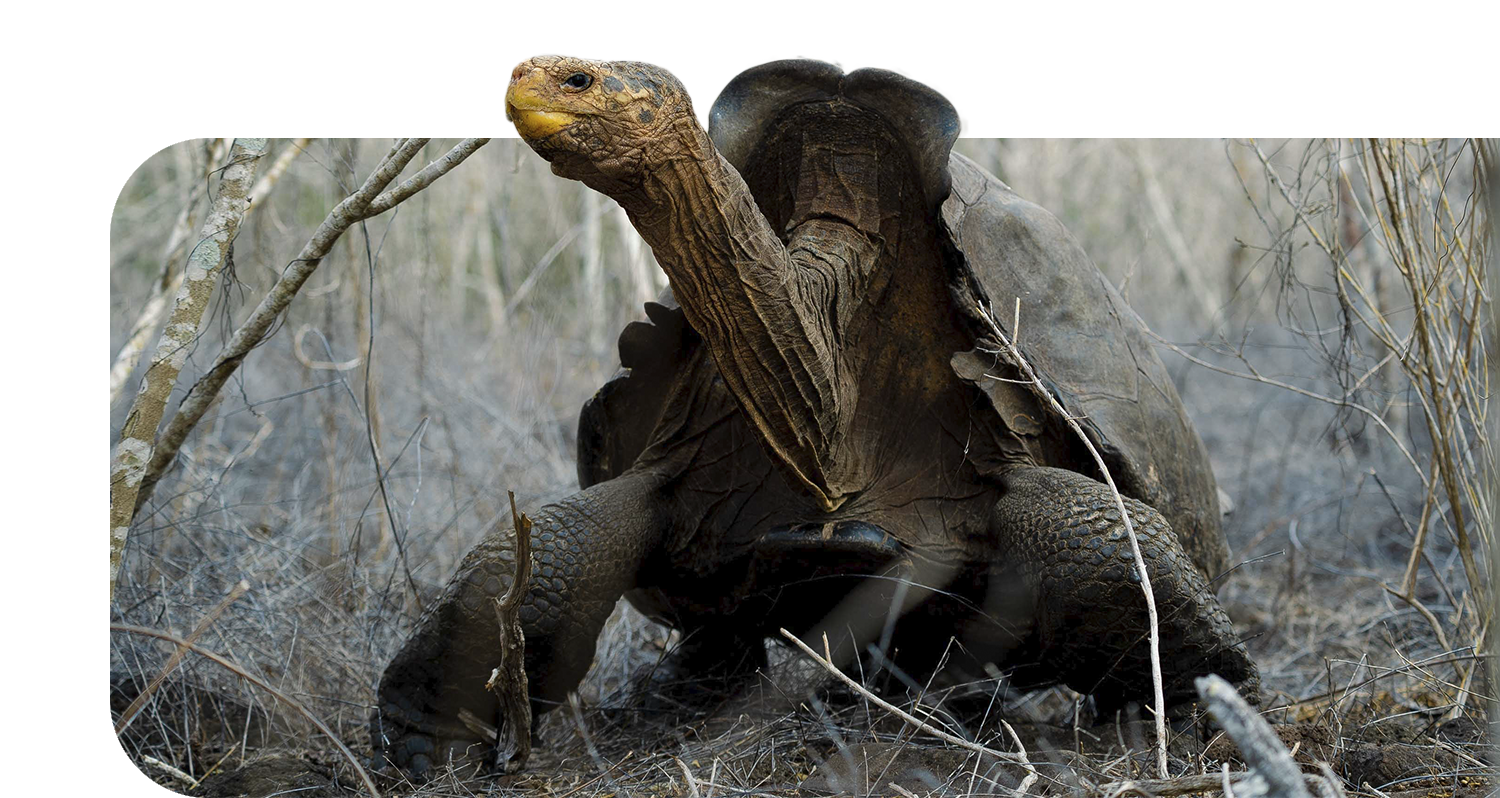
Arriving from mainland South America 2-3 million years ago, the most famous resident of the Galapagos Islands is the Galapagos giant tortoise. In fact, the islands were named after the giant tortoises’ saddle-shaped shells – galapágo is an old Spanish word for saddle. Today there are 12 species of giant tortoises left in the Galapagos Islands. Their population is currently estimated at between 30,000 and 35,000 individuals.
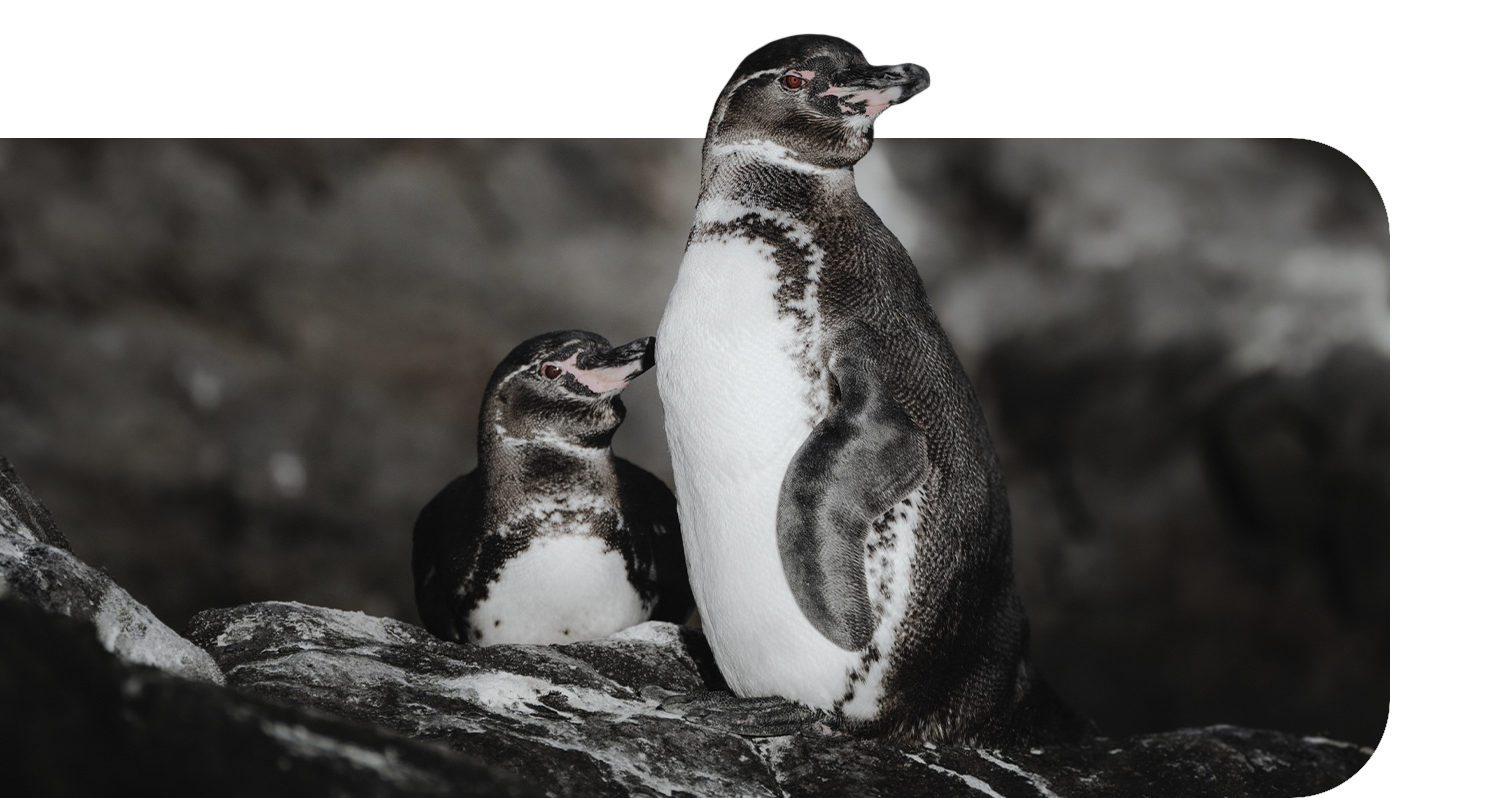
The Galapagos penguin is the second smallest penguin species in the world and is endemic to the Galapagos Archipelago, which means that it is found nowhere else in the world. It is also the only penguin species found in the Northern Hemisphere, with some colonies living on the northern tip of Isabela Island.

The green sea turtle is the only turtle species to nest in the Galapagos. The species is a frequent sighting on snorkeling and diving trips around the archipelago. It mainly stays near the coastline and around islands and is rarely observed in the open ocean. The green sea turtle is the only species to come on shore regularly to bask (sunbathe).
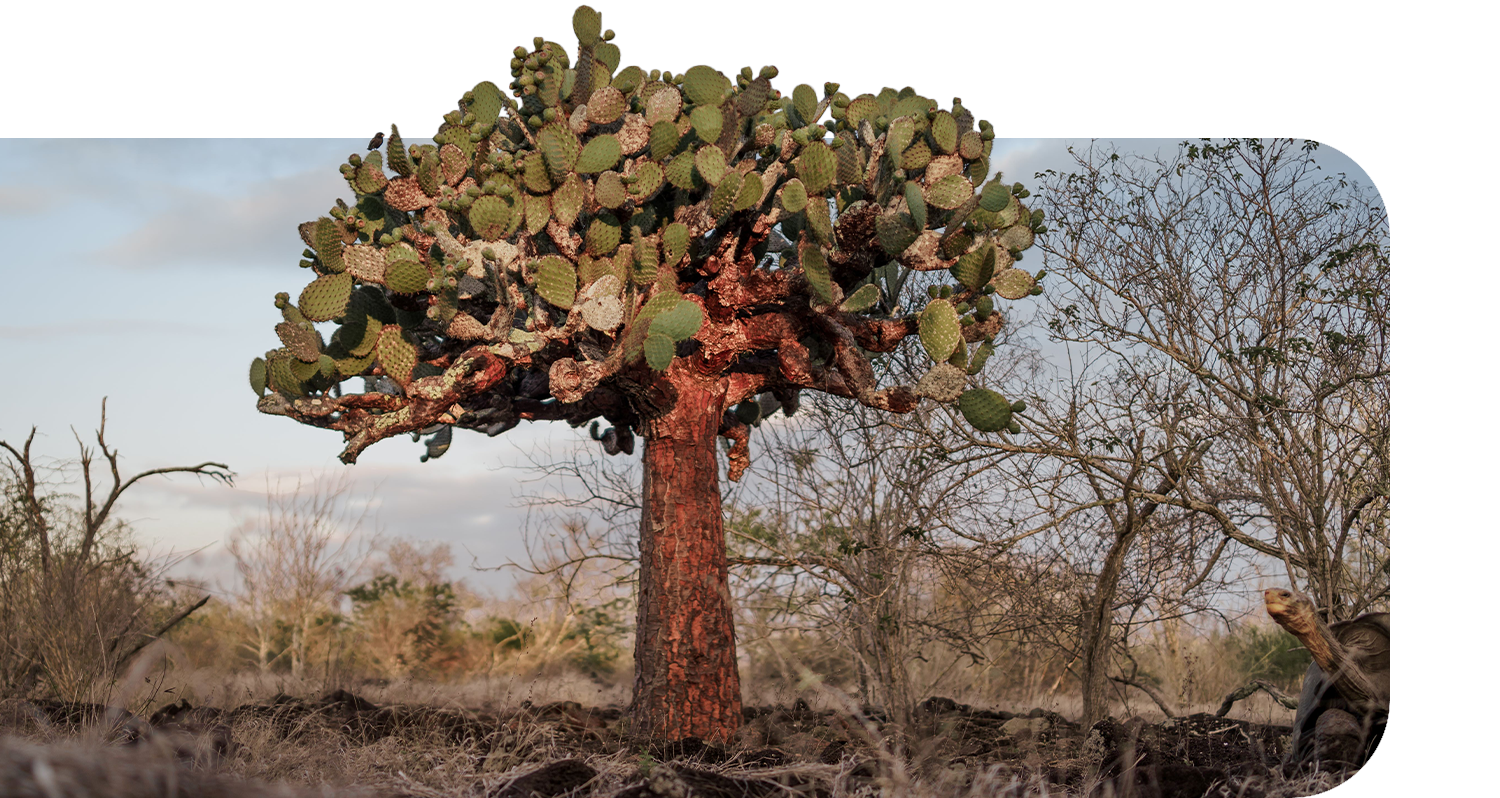
Galapagos prickly pear cactus is considered a keystone species because it serves as the primary food source for giant tortoises and land iguanas, contributing to the islands’ ecological balance. It also provides food, shade, and nesting structures for other wildlife. We restore their populations across the archipelago and seek to enhance the conservation process of the Galapagos ecosystems by using ecological restoration tools.
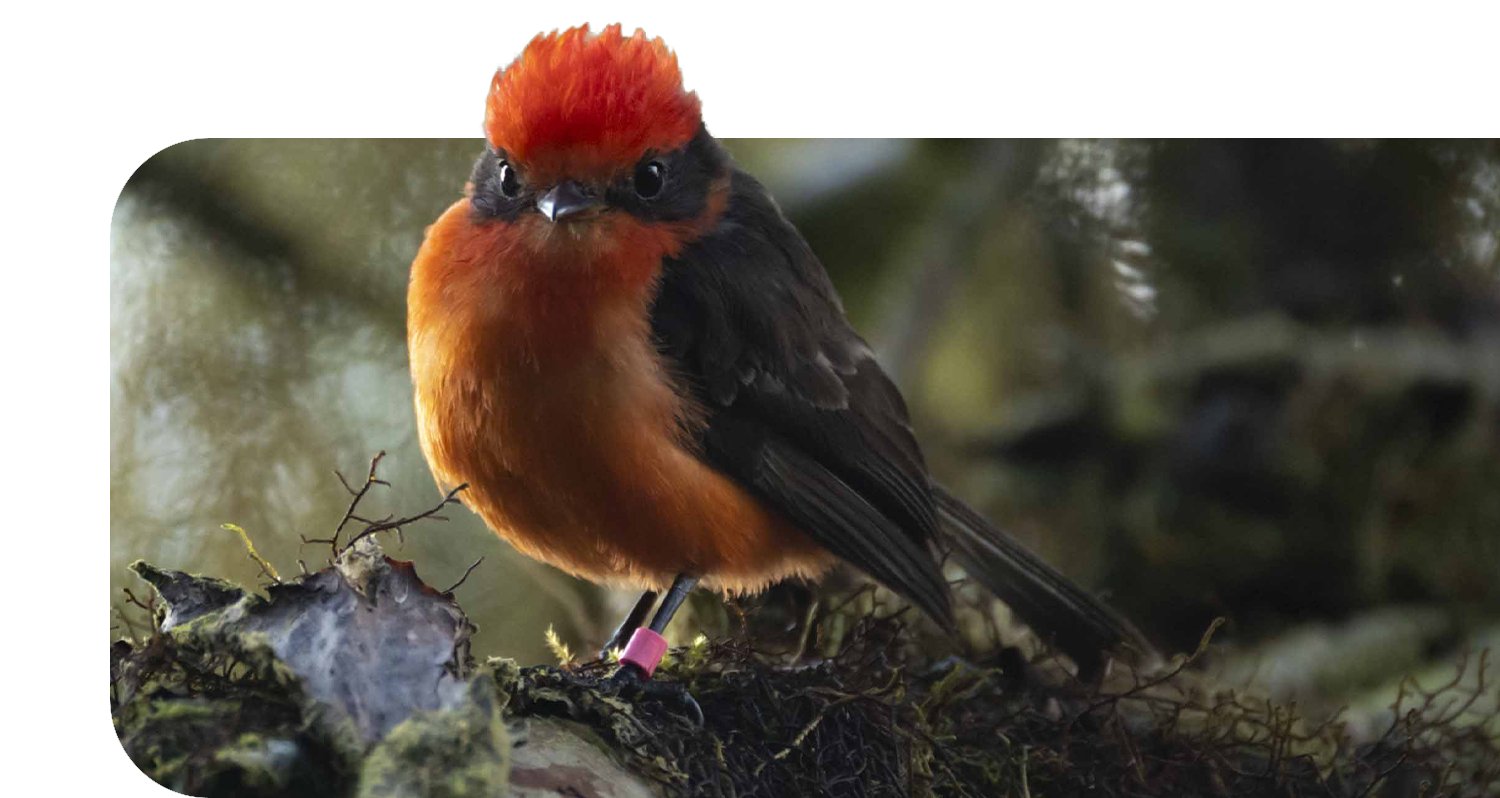
First discovered in Galapagos during Charles Darwin’s voyage on HMS Beagle, the Little Vermilion Flycatcher is endemic to the Galapagos, which means that it is found nowhere else in the world. Males are brightly colored and are one of the favorite sightings for many visitors to the Galapagos Islands, if lucky.
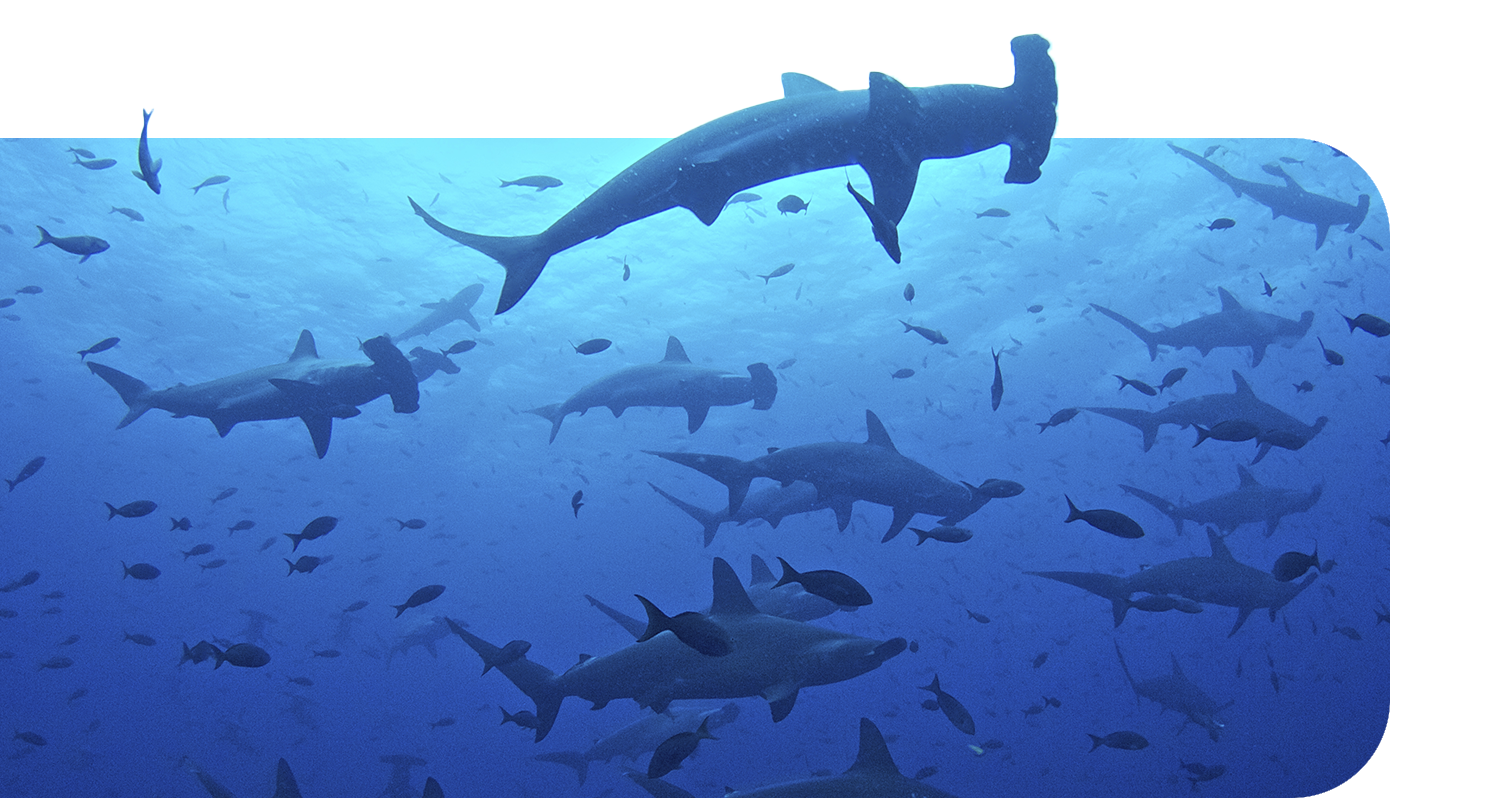
The scalloped hammerhead shark is one of the most iconic marine species of the Galapagos and the Galapagos Marine Reserve remains one of the best places in the world to see them. Scalloped hammerhead sharks live in warm temperate and tropical coastal waters of the Atlantic, Pacific, and Indian Oceans.
Most adults lead solitary lives but sometimes may be seen in pairs. However, in some parts of the world, including Darwin Island in the northern Galapagos, several hundred scalloped hammerheads come together to form large schools to migrate toward the poles over the summer.

Famed for their lifelong pair bonds and elaborate courtship dances, Waved Albatrosses are the only
albatross species that breeds exclusively in the tropics. Though they spend much of their lives at sea, the entire population returns each year to Española Island in Galápagos to breed, making
the archipelago essential to their survival.

The Mangrove Finch is one of the rarest and most endangered birds on Earth. A member of the iconic group known as Darwin’s finches, this species is found only in the Galapagos Islands. With highly specialized habitat needs, it survives in just two isolated pockets of mangrove forest on the northwest coast of Isabela Island, with fewer than 60 individuals left in the wild.

The blue-footed booby is one of Galapagos’ most iconic seabirds, famous worldwide for its bright blue feet and playful courtship dance. Their vivid feet are actually key to survival. The brighter the color, the greater the bird’s appeal to potential mates. During courtship, males lift their feet in a comical yet graceful 'dance,' creating one of the archipelago’s most captivating natural spectacles.


The impact you make on this small ecosystem of enormous biodiversity is part of a larger footprint you are leaving for the world's future. Join us on our mission to safeguard one of our planet’s most important natural treasures through science and conservation action by making a donation today. Thank you for making an impact with us.